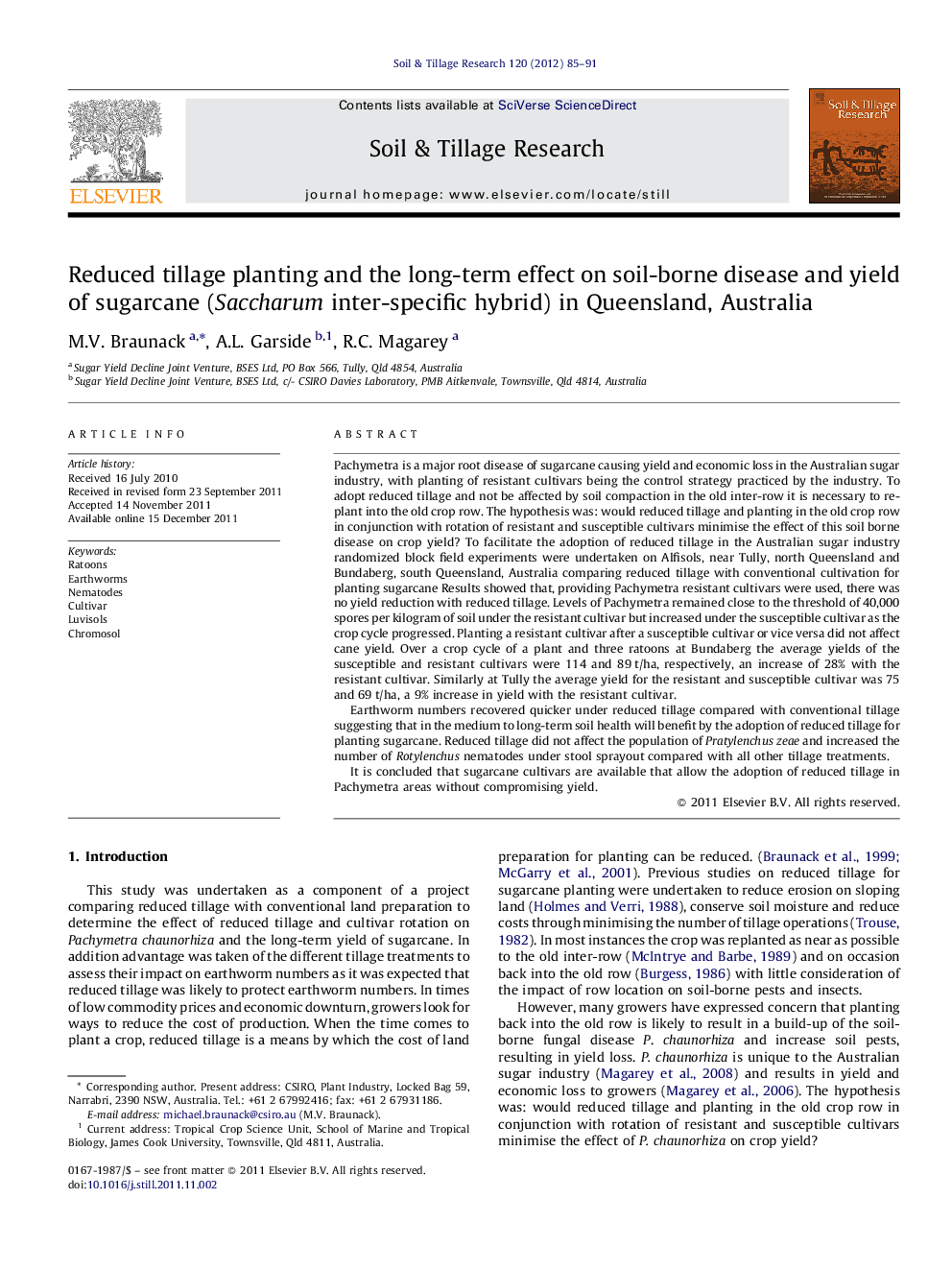| کد مقاله | کد نشریه | سال انتشار | مقاله انگلیسی | نسخه تمام متن |
|---|---|---|---|---|
| 306001 | 513065 | 2012 | 7 صفحه PDF | دانلود رایگان |

Pachymetra is a major root disease of sugarcane causing yield and economic loss in the Australian sugar industry, with planting of resistant cultivars being the control strategy practiced by the industry. To adopt reduced tillage and not be affected by soil compaction in the old inter-row it is necessary to re-plant into the old crop row. The hypothesis was: would reduced tillage and planting in the old crop row in conjunction with rotation of resistant and susceptible cultivars minimise the effect of this soil borne disease on crop yield? To facilitate the adoption of reduced tillage in the Australian sugar industry randomized block field experiments were undertaken on Alfisols, near Tully, north Queensland and Bundaberg, south Queensland, Australia comparing reduced tillage with conventional cultivation for planting sugarcane Results showed that, providing Pachymetra resistant cultivars were used, there was no yield reduction with reduced tillage. Levels of Pachymetra remained close to the threshold of 40,000 spores per kilogram of soil under the resistant cultivar but increased under the susceptible cultivar as the crop cycle progressed. Planting a resistant cultivar after a susceptible cultivar or vice versa did not affect cane yield. Over a crop cycle of a plant and three ratoons at Bundaberg the average yields of the susceptible and resistant cultivars were 114 and 89 t/ha, respectively, an increase of 28% with the resistant cultivar. Similarly at Tully the average yield for the resistant and susceptible cultivar was 75 and 69 t/ha, a 9% increase in yield with the resistant cultivar.Earthworm numbers recovered quicker under reduced tillage compared with conventional tillage suggesting that in the medium to long-term soil health will benefit by the adoption of reduced tillage for planting sugarcane. Reduced tillage did not affect the population of Pratylenchus zeae and increased the number of Rotylenchus nematodes under stool sprayout compared with all other tillage treatments.It is concluded that sugarcane cultivars are available that allow the adoption of reduced tillage in Pachymetra areas without compromising yield.
► Yield is not compromised by planting into the old row if using Pachymetra tolerant cultivars.
► Earthworms recovered more rapidly after minimal soil disturbance.
► Reduced tillage is a viable alternative for planting sugarcane.
Journal: Soil and Tillage Research - Volume 120, April 2012, Pages 85–91